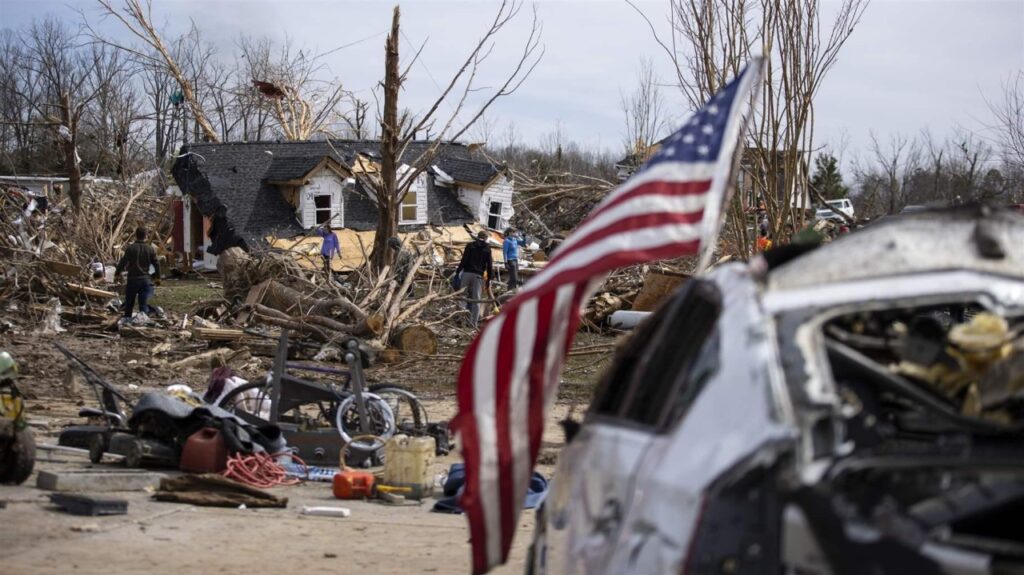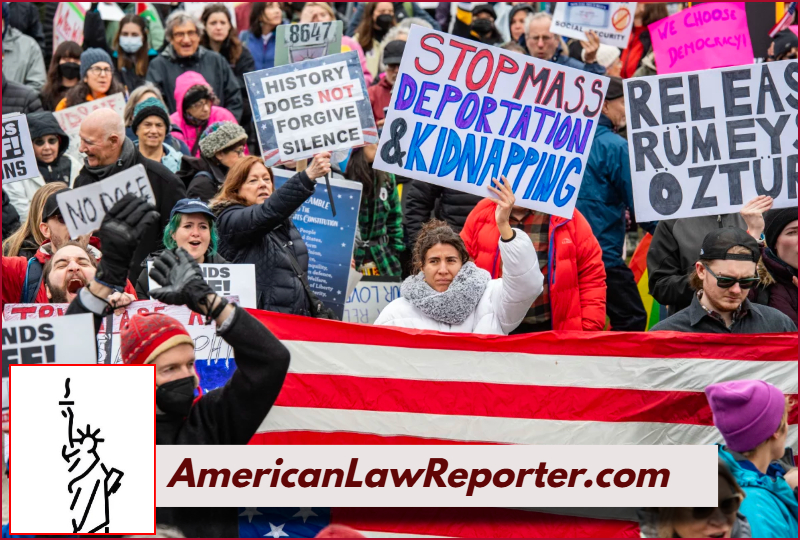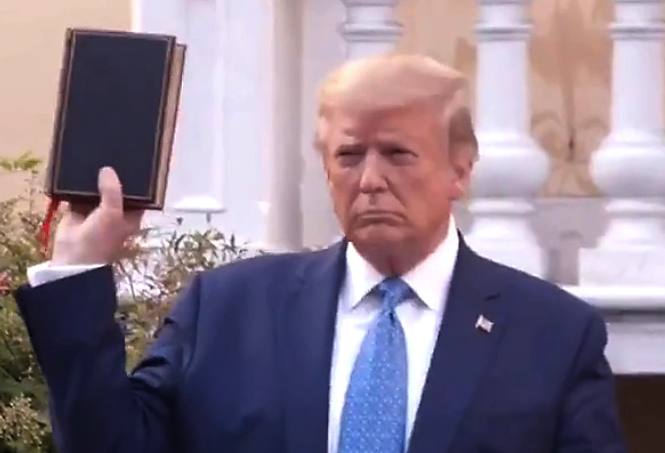At a little over 150 days into Donald Trump’s second presidency, America finds itself at a constitutional and cultural crossroads. What began as a conservative policy roadmap — Project 2025, spearheaded by the Heritage Foundation — is rapidly transforming into a governing reality.
Despite Trump’s early claims of having “nothing to do with” the initiative, the overlap between his executive orders and the policy blueprint has become increasingly difficult to ignore.
Now, with more than 100 of the 313 Project 2025 proposals implemented or in progress, political analysts, civil rights organizations, citizens and legal scholars are raising alarms. If this trajectory continues through 2029, the United States may experience one of the most sweeping transformations of its government and civil society in modern history.
Executive Power, Redefined
At the heart of Project 2025 is a fundamental restructuring of executive power. By design, the plan aims to dismantle the “administrative state” — the complex system of career federal employees, regulatory agencies, and independent watchdogs that have traditionally operated with autonomy from partisan influence.
In its place, Trump has begun implementing a system where loyalty to the president is the litmus test for public service. The Schedule F executive order, revived and expanded, has already led to the dismissal of hundreds of career civil servants deemed “ideologically opposed” to the administration. Critics warn that this reshaping of federal employment risks converting the U.S. government into a patronage system, where bureaucratic neutrality is sacrificed for political loyalty.
Abolishing the Department of Education

One of the clearest examples of Project 2025’s influence is the targeted dismantling of the U.S. Department of Education. Trump’s March executive order drastically downsized the agency, a symbolic and operational move toward its proposed elimination.
While full abolition requires Congressional approval, functions like student loan management, special education oversight, and civil rights enforcement in schools have already been defunded or transferred to state control — a transition that critics say leaves millions of students, especially Black American students, vulnerable to unequal standards and access.
The result? A patchwork of education policies across the states, where local governments wield full control over curricula, disciplinary policies, and funding — including the growing introduction of “patriotic education” standards pushed by conservative lawmakers.
Dismantling DEI Across Government and Culture
From the very first day of his second term, Trump declared war on diversity, equity, and inclusion (DEI) initiatives, signing an executive order that terminated DEI offices and programs across all federal agencies. Project 2025 goes further, calling for the erasure of race- and gender-conscious language from all federal rules, contracts, and legislation.
The result has been a chilling effect across government and beyond. Federal contractors, public universities, and even corporate partners now avoid DEI programming out of legal risk. The Civil Rights Division of the DOJ, once a major enforcer of anti-discrimination laws, has seen a deep reduction in resources and staff.
Supporters argue that DEI programs had become bloated and divisive, but opponents counter that the erasure of DEI in hiring, education, and training amounts to a rollback of decades of civil rights progress.
Shifting Disaster Response to the States

Another dramatic shift underway is the reimagining — or perhaps gutting — of federal disaster response. Trump’s new policy, inspired by Project 2025, reassigns most disaster management responsibilities to state and local governments, leaving FEMA as a last resort agency only for catastrophic events.
States now bear the brunt of hurricane, wildfire, and flood response. This has already sparked crises in poorer states unable to shoulder the burden, resulting in delayed responses and mounting fatalities. Arkansas, West Virginia, and parts of Mississippi have reported FEMA denials for disaster aid after recent storms.
Project 2025’s cost-sharing reform reduces federal reimbursement for disaster costs to as low as 25%, and it calls for termination of state preparedness grants, all justified by the belief that FEMA is “overtasked and in debt.”
Defunding Public Broadcasting and Investigating NPR and PBS

Public media, long a target of conservative ire, is now firmly in the administration’s crosshairs. FCC Commissioner Brendan Carr, a key contributor to Project 2025, initiated an investigation into NPR and PBS stations for alleged violations of noncommercial broadcasting rules. Trump’s budget proposal eliminates all funding for the Corporation for Public Broadcasting.
These actions could result in the closure of hundreds of local stations, especially in rural America. PBS, in particular, has warned of losing its ability to deliver children’s programming, educational tools, and emergency alerts.
The underlying philosophy in Project 2025’s media section is clear: publicly funded media is “leftist” and not in the public interest. Defunding and reclassifying them removes their privileged status and opens the door to greater ideological control over mass communication.
What Lies Ahead: The America of 2029
If current trends hold, by the end of Trump’s second term — and the full implementation of Project 2025 — the American landscape could look profoundly different:
- Centralized Presidential Power: A White House staffed almost entirely with loyalists, with broad control over regulatory and law enforcement agencies.
- Minimal Federal Oversight: Education, healthcare, civil rights, and disaster relief largely controlled by states, leading to greater disparities between red and blue states.
- Cultural Realignment: The erasure of DEI, gender, and reproductive rights language from federal discourse reshapes what is considered acceptable in public policy and education.
- Weakened Public Institutions: Public broadcasting, independent regulatory commissions, and civil service protections are severely weakened or eliminated.
- An America Divided: The legal, social, and cultural gaps between states may widen into parallel nations — one increasingly authoritarian, the other resistant and litigious.
Resistance, Legal Battles, and Public Opinion

Civil liberties organizations like the ACLU, NAACP, and Southern Poverty Law Center are preparing waves of litigation, while blue states like California and New York have declared portions of Trump’s federal orders as unconstitutional. But under a Supreme Court now cemented with a 6–3 conservative majority, many challenges are unlikely to succeed.
Public opinion remains sharply divided. A slim majority supports Trump’s efforts to “drain the swamp,” according to recent polling by Pew Research, but young voters, independents, and marginalized groups report rising anxiety and political disengagement.
Conclusion: Democratic Backsliding or Reform Revolution?
Project 2025’s full implementation is more than a policy shift; it represents a paradigm change in American governance. For Trump’s supporters, it’s a long-overdue correction to liberal overreach. For critics, it’s a blueprint for authoritarianism cloaked in bureaucracy.
As the next three and a half years unfold, America may face a defining test of its democratic resilience. Will the guardrails of the Constitution hold — or will Project 2025 prove to be the wrecking ball that reshaped the republic?
Editor’s Note: This article is part of an ongoing series analyzing the political and legal impact of the Trump administration’s second term. To follow all Project 2025 developments, visit https://www.project2025.observer/

